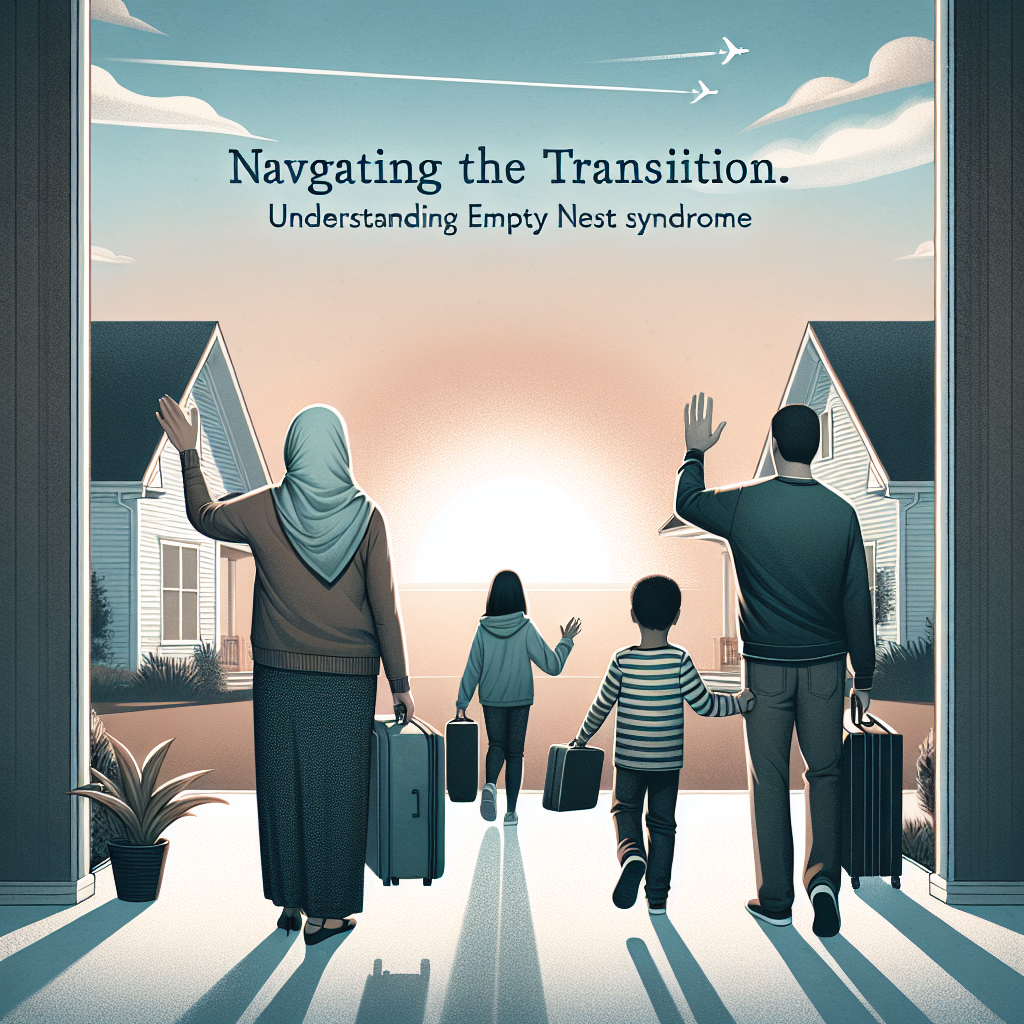
Introduction
Imagine standing in a home that once buzzed with the laughter of children, now filled with an unnerving silence. The toys, the artwork, the countless family photos—they still linger like shadows of a life that felt inevitable. This heart-wrenching moment—when parents suddenly find themselves alone—is commonly known as "Empty Nest Syndrome." Navigating the transition: understanding Empty Nest Syndrome is crucial not only for emotional well-being but also for forging a new path forward. In a world that often prioritizes the needs of children, it’s time for parents to rediscover their identities and joys. Let’s explore this transformative experience together.
Understanding Empty Nest Syndrome
What is Empty Nest Syndrome?
Empty Nest Syndrome (ENS) refers to the feelings of grief and loss parents may experience when their children leave home for college, work, or other life pursuits. While this transition is a normal part of life, the emotional implications can range from mild sadness to severe depression. Understanding ENS is vital as it equips parents to face the reality of their new circumstances.
The Emotional Rollercoaster
The emotional landscape of Empty Nest Syndrome can be complex, encompassing feelings such as:
- Sadness: A sense of loss and longing for the time spent with children.
- Loneliness: A feeling of emptiness due to decreased social interactions.
- Fear: Anxiety about the future and what it holds for both parents and children.
Case Study: The Johnson Family
To better illustrate these emotions, consider the Johnson family. When their youngest child, Sarah, went off to college, both parents, Mary and Joe, experienced profound loneliness. Mary found herself asking, “What now?” while Joe sought solace in his hobbies. Their initial sadness transformed into an exploration of new interests, eventually leading them to reconnect as a couple.
Analysis of the Case: The Johnsons highlight the necessity of proactive coping strategies. Instead of succumbing to isolation, they explored new avenues and rekindled their relationship.
Navigating the Transition: A Step-by-Step Guide
Step 1: Acknowledge Your Feelings
The first step in navigating the transition is to acknowledge your emotions openly. Permit yourself to feel sadness and nostalgia; these feelings are natural. Self-acceptance paves the way for healing.
Step 2: Reconnect with Yourself
In the quest of navigating the transition: understanding Empty Nest Syndrome, it’s essential to rediscover your identity. Reflect on your interests that might have been sidelined during parenting. Consider:
- Pursuing hobbies that excite you.
- Enrolling in a class or workshop.
- Starting a fitness routine.
Research shows that individuals who engage in personal development during this transition experience significantly less emotional distress.
Step 3: Strengthening Marital Bonds
Often, couples find that their relationship has taken a backseat to parenting. Focus on nurturing your relationship with your partner. Plan date nights, take trips, or engage in shared hobbies to rekindle your connection.
Step 4: Cultivating New Social Connections
Empty Nest Syndrome can lead to feelings of isolation. Joining community groups or support networks can help you forge new friendships. Platforms like Meetup or local community centers are great resources for finding like-minded individuals.
Chart: Emotional Responses to Empty Nest Syndrome
| Emotion | Description | Coping Strategies |
|---|---|---|
| Sadness | Feeling of loss | Journaling, therapy |
| Loneliness | Lacking social interactions | Join clubs, schedule meet-ups |
| Anxiety | Fear of the unknown | Mindfulness, setting new goals |
Embracing New Opportunities
Step 5: Discovering New Interests
With newfound free time, explore activities you’ve always wanted to try. How about painting, writing, or volunteering? This is the perfect opportunity to step out of your comfort zone.
Step 6: Planning for the Future
Navigating the transition also involves forward-thinking. Consider setting goals for retirement or travel. Planning for the future can ignite optimism and excitement.
Case Study: The Smiths’ Journey
After their son left for university, the Smiths invested time in their passion for travel. They planned a month-long trip to Europe, rediscovering joy and companionship in their shared experiences.
Analysis of the Case: The Smiths exemplify how embracing new adventures can alleviate feelings of angst and reinforce bonds.
Encouraging Independence in Your Children
Step 7: Letting Go with Love
While it’s natural to feel sad, it’s essential to encourage your children’s independence. Celebrate their achievements, and remember that their success is also your success.
Step 8: Maintaining Family Bonds
Create a communication plan to stay connected with your children. Regular phone calls or video chats can maintain relationships despite physical distance.
Conclusion
Navigating the transition: understanding Empty Nest Syndrome isn’t merely about coping with loss; it’s about rebirth. This phase of life offers you an incredible opportunity to redefine yourself, connect more deeply with your partner, and create new, exciting experiences. By embracing these changes, you pave the way for a richly fulfilling life ahead.
Actionable Insights
- Start Journaling: Reflect on your emotions. Write down what you wish to explore.
- Sign Up for a Class: Whether it’s pottery, writing, or cooking, now’s the time to ignite old passions.
- Create a Travel Bucket List: Start planning trips with your partner or friends to look forward to.
FAQs
1. What are the common symptoms of Empty Nest Syndrome?
Common symptoms include sadness, anxiety, loneliness, and a feeling of loss.
2. How can I cope with my feelings of loneliness?
Join local clubs or groups, engage with community activities, and reconnect with friends.
3. Is it normal to feel guilty during this transition?
Yes, it’s common to feel guilty for wanting to enjoy this new phase. Remember, it’s okay to prioritize your happiness.
4. Should I seek therapy to help cope with Empty Nest Syndrome?
Therapy can provide valuable tools and strategies to navigate your emotions effectively.
5. How can I maintain a close relationship with my children after they leave home?
Regular communication—whether through calls, video chats, or planned visits—can maintain close bonds.
In conclusion, remember that this transition, while challenging, is also filled with opportunities for growth and renewal. Share your experiences, seek support when needed, and embrace the journey of rediscovery. You are not alone in this; together, we can navigate the transition.

















